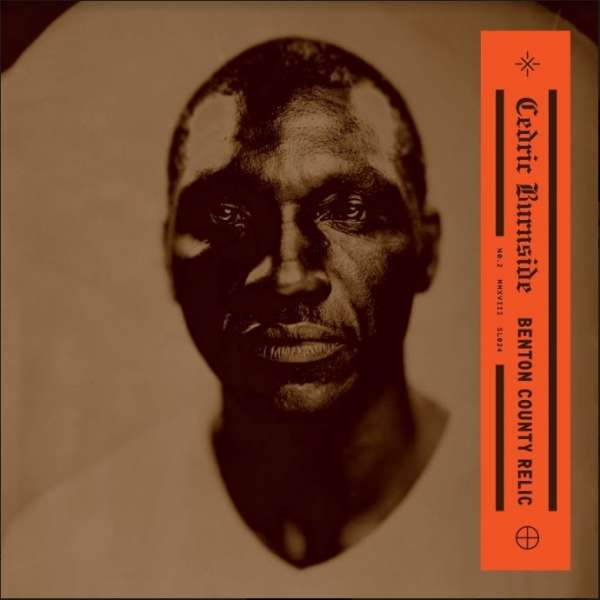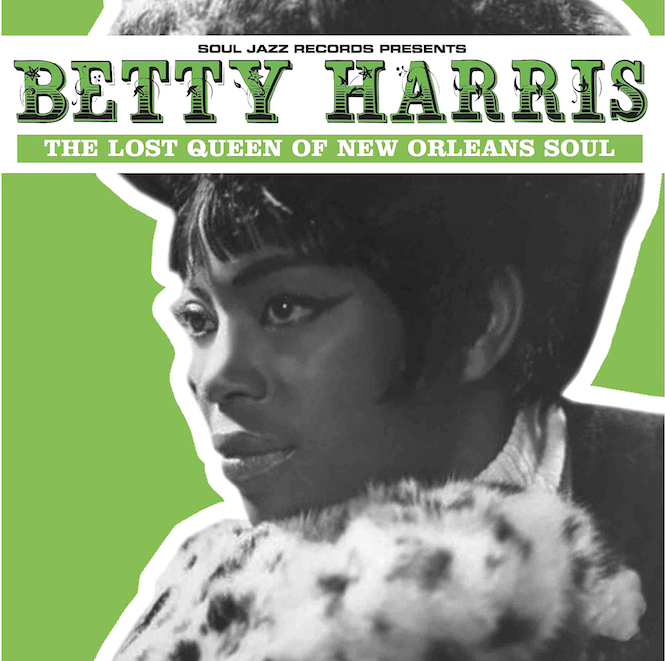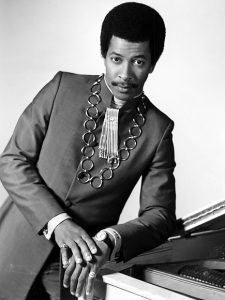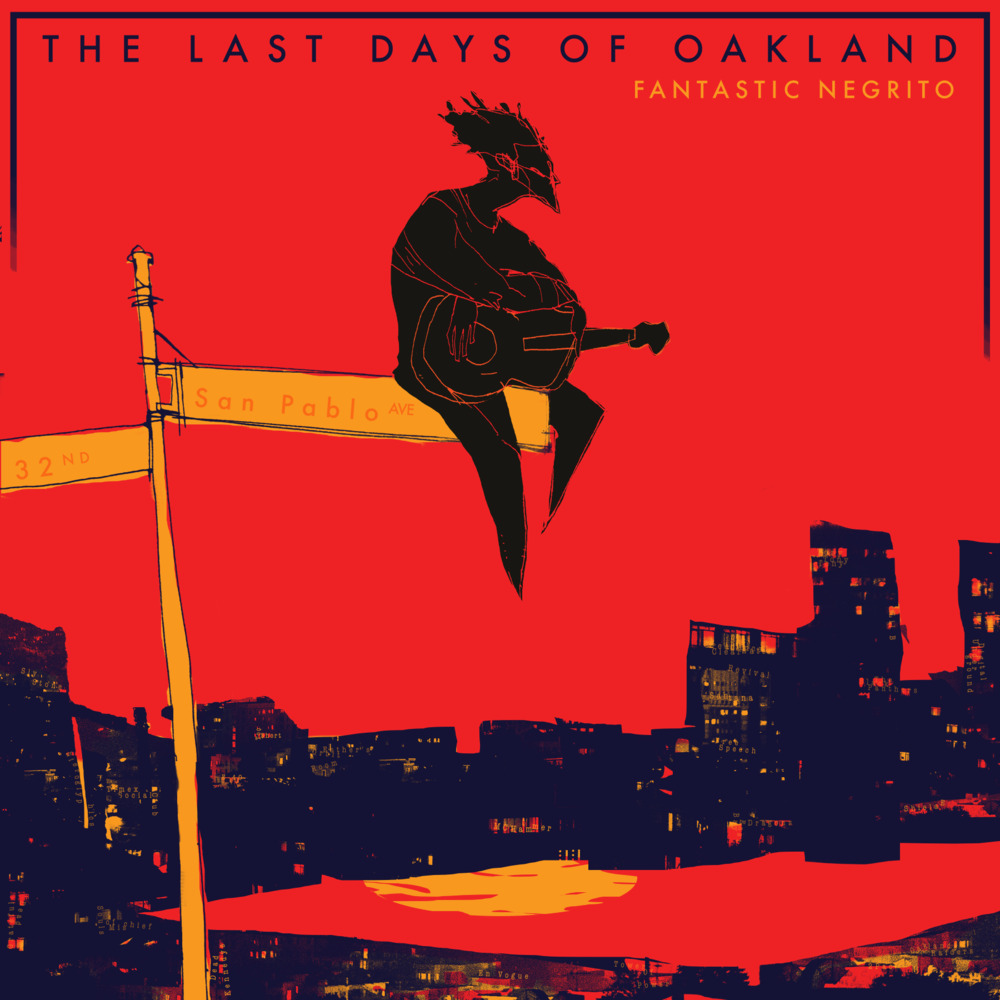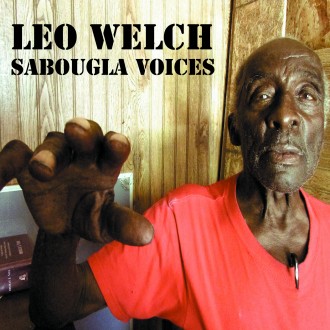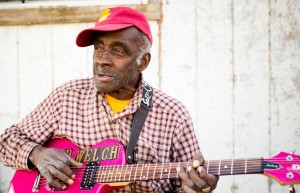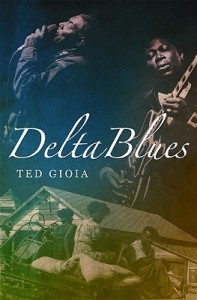Tag Archives: howlin wolf
BETTY HARRIS: THE LOST QUEEN OF NEW ORLEANS SOUL
 Soul Jazz RecordsÂ
For fans of James Brown, Irma Thomas, Tina Turner, and The Meters
When you think of the greatest Soul singers of all time you probably don’t think of the name Betty Harris. Despite being as talented as superstars like Tina Turner and Etta James, Ms. Harris isn’t a household name. During the 1960’s she only released a handful of singles and only a few of those became hits. She then retired in 1970 to focus on her family. While her music has become very popular among Soul record collectors and aficionados over the years, it has never reached a mass audience. Fortunately the good folks at Soul Jazz Records are trying to change that with their recent release, BETTY HARRIS: THE LOST QUEEN OF NEW ORLEANS SOUL!
THE BEGINNING
Born in Orlando FL, in 1941 (or possibly 1939) Ms. Harris started out singing gospel music when she was very young. Part of a very religious family, Harris wasn’t allowed to sing secular music while under her parent’s roof. She left home in her late teens to perform Blues and Soul music in California. After several years on the West Coast she moved to New York City where she hooked up with songwriter/producer Bert Berns. In 1963 she recorded her first hit, “Cry To Me”, a slow rendition of a tune singer Solomon Burke had recorded a year earlier. The song became a big hit for Harris and actually surpassed Burke’s original recording on the national charts! The success of “Cry To Me” inspired a few more releases from the Berns/Harris team including a fiery number called “Mo Jo Hannah”. Unfortunately none of these other recordings because hits and Burns and Harris went their separate ways.
WORKING WITH ALLEN TOUSSAINT
Shortly after her relationship with Burt Berns ended Harris met master Musican/Songwriter Allen Toussaint and began recording for his New Orleans based record label Sansu. Even though only one of the singles she recorded for Sansu charted nationally, the recordings she made while at the label are classic and make up the material on BETTY HARRIS: THE LOST QUEEN OF NEW ORLEANS SOUL. The music on this compilation is all killer-no-filler and ranges from classic R&B to hard funk! While it’s Harris’ larger-then-life vocals that commands the most attention on these songs we must also note that the backing band is made up of some of New Orleans’ finest musicians, including members of the legendary Funk group, The Meters. Like the Funk Brothers at Motown or Booker T. & The MG’s at STAX, The Meters are as important to the recording as the artist they are supporting. Finally, we must also acknowledge that none of these recordings would’ve been possible without master musician/producer Allen Toussiant behind the board. Not only do his talents as a producer take these recordings to another level, he also wrote almost all of these songs!
FANTASTIC NEGRITO: THE LAST DAYS OF OAKLAND
FANTASTIC NEGRITO: THE LAST DAYS OF OAKLANDÂ
LABEL: Blackball Universe
For fans of Fishbone, Tom Waits, Funkadelic, Junior Kimbrough
For those of you who believe there is no more good new music being released these days, I invite you to listen to the new album, THE LAST DAYS OF OAKLAND, from multi-instrumentalist Fantastic Negrito. Born Xavier Dphrepaulezz, and raised in a strict and religious household, the man now known as Fantastic Negrito is one of the most exciting artists to emerge from the Bay Area music scene in a long time. He moved to Oakland when he was 12 years old and immediately immersed himself in the wide variety of music styles that make up the Bay Area music scene. This explains to us why Dphrepaulezz’s own musical style really can’t be described as one genre. Elements of Funk, Soul, Gospel, Folk, and Blues make up the songs on THE LAST DAYS OF OAKLAND, and much like the city the album is named after, the music on the album is wonderful blend of styles and culture.
While this might be the first release for “Fantastic Negrito” it’s not the first release for Xavier Dphrepaulezz. In the early 90’s Dphrepaulezz was living in Los Angeles and briefly signed to Interscope Records and released one album. The album failed to satisfy the powers that be at Interscope and he was released from the label. Frustrated he actually gave up music. He then was involved in a terrible car accident which left him bedridden for several months. He returned to Oakland and several years later after the birth of his son the creative juices started to flow again and “Fantastic Negrito” was born.
The music on THE LAST DAYS OF OAKLAND takes the listener on a journey through the history of American roots music. The haunting Blues-Gospel tune “In The Pines” is a song that dates back to the late 1800’s and has been covered by everyone from Leadbelly to Nirvana. Here the song is given new life by Fantastic Negrito who recently released an accompanying video to the song that talks about the impact of gun violence in America today. Another stand-out track on the record is “Lost In The Crowd”. Originally released on his Deluxe LP in 2015 Fantastic Negrito commands your attention while he screams and shouts through this bluesy-rocker. A word also must be mentioned about the album’s cover art. The cover art features a character sitting a top a street sign that marks the location of Saint Andrews Plaza in West Oakland. Behind them is a beautiful drawing of the City of Oakland and a sunset. It might not be as important as the music on the record but the cover art truly makes this album a complete work of art. For fans who like something a little different or are fans of artists like Tom Waits, Fishbone, and Funkadelic, THE LAST DAYS OF OAKLAND is a must have.
ROBERT BELFOUR 1940-2015
Similar Artists: Junior Kimbrough, R.L. Burnside, Lightnin’ Hopkins
The Beginning: Fat Possum Records and Hill Country Blues
In 1992 a small indie label called Fat Possum Records gave the American Blues scene a much needed kick-in-the-ass when they released the debut album from 62 year-old Bluesman Junior Kimbrough. Entitled ALL NIGHT LONG, the record was met with rave reviews from both critics and Blues fans and gave Kimbrough some well deserved national attention. Shortly after the success of the Kimbrough record Fat Possum also started having success with another one of their artists, R.L. Burnside. Like Junior Kimbrough, R.L. Burnside was in his 60’s a resident of the Mississippi Hill Country and a master of a style of music called “Hill Country Blues”. Different than the well known Delta Blues style, Hill Country Blues focuses more on creating a groove and sometimes features other instruments such as Drums. With both the Kimbrough and Burnside records receiving some good press, Fat Possum began recording other Hill Country Blues musicians. Unfortunately the label quickly ran into the problem that many of the musicians they recorded were usually older and in very poor health. Sadly, many of them died before or shortly after their album got released. Down but not out Fat Possum Records kept plugging along and in 2000 they released a record by a 59 year-old construction worker named Robert Belfour.
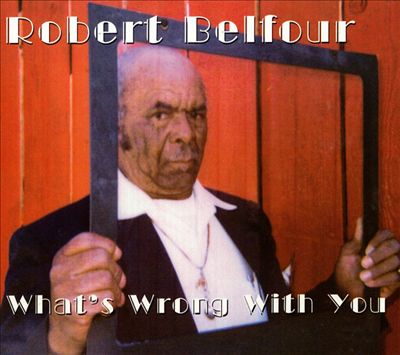 Fat Possum and Mr. Robert Belfour
Fat Possum and Mr. Robert Belfour
Robert Belfour was born in 1940 in Red Banks, Mississippi. Growing up in the Hill Country, he was surrounded by music and learned to play the guitar by watching his father play. As his interest in the guitar grew he began performing for friends and family at picnics. He continued his musical education by watching local legends like Othar Turner and Junior Kimbrough who both lived in the area and regularly performed at parties and in local Juke-Joints. Unfortunately when Robert was just 13 years old his father passed away and he was forced to get a job in order support the family. Then in 1959 Robert got married and moved to Memphis, Tennessee. He worked in construction for the next 35 years and only played music when he had time. In fact, it was until the late 80’s when he really began to take music seriously again. His first real break came in 1994 he was featured on the compilation album THE SPIRIT LIVES ON, DEEP SOUTH COUNTRY BLUES & SPIRITUALS. The recordings he contributed to the record got the attention of Fat Possum Records and in the year 2000 the label issued his debut album WHAT’S WRONG WITH YOU. A dark-acoustic record, WHAT’S WRONG WITH YOU showcased Roberts percussive guitar work and rich deep voice. The album featured a mixture of originals and covers, many of which had been made popular by other Hill Country Blues musicians. The album was a success with many Blues enthusiasts and introduced Robert to an international audience.
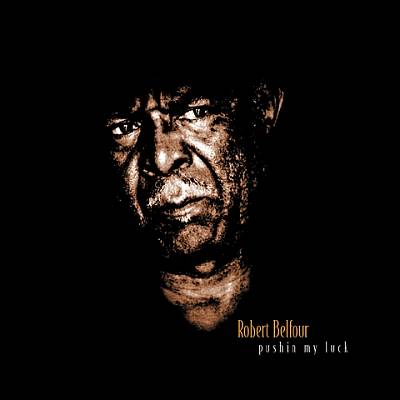 In 2003 Robert released his second album on Fat Possum, the humorously titled, PUSHIN’ MY LUCK. Like it’s predecessor, the album was primarily acoustic and pleased both fans and critics. Internationally, Robert’s popularity grew and he started to play a number of European Blues festivals. Back in the states, Robert kept his home in Memphis and continued to be a regular performer on the Juke-Joint scene in Clarksdale, Mississippi. A dynamic performer into his 70’s, Robert’s shows would usually last late into the the night and sometimes be as long as three hours! Unfortunately, all good things must come to an end. Robert Balfour passed away at his home in Memphis on February 25, 2015. Fortunately for us (and thanks to the good folks at Fat Possum Records) his recordings are still readily available and can be found on iMusic, Spotify, Amazon, and at your local record store.
In 2003 Robert released his second album on Fat Possum, the humorously titled, PUSHIN’ MY LUCK. Like it’s predecessor, the album was primarily acoustic and pleased both fans and critics. Internationally, Robert’s popularity grew and he started to play a number of European Blues festivals. Back in the states, Robert kept his home in Memphis and continued to be a regular performer on the Juke-Joint scene in Clarksdale, Mississippi. A dynamic performer into his 70’s, Robert’s shows would usually last late into the the night and sometimes be as long as three hours! Unfortunately, all good things must come to an end. Robert Balfour passed away at his home in Memphis on February 25, 2015. Fortunately for us (and thanks to the good folks at Fat Possum Records) his recordings are still readily available and can be found on iMusic, Spotify, Amazon, and at your local record store.
NO MORE DOGGIN’ The RPM Records Story: Vol 1 1950-1953
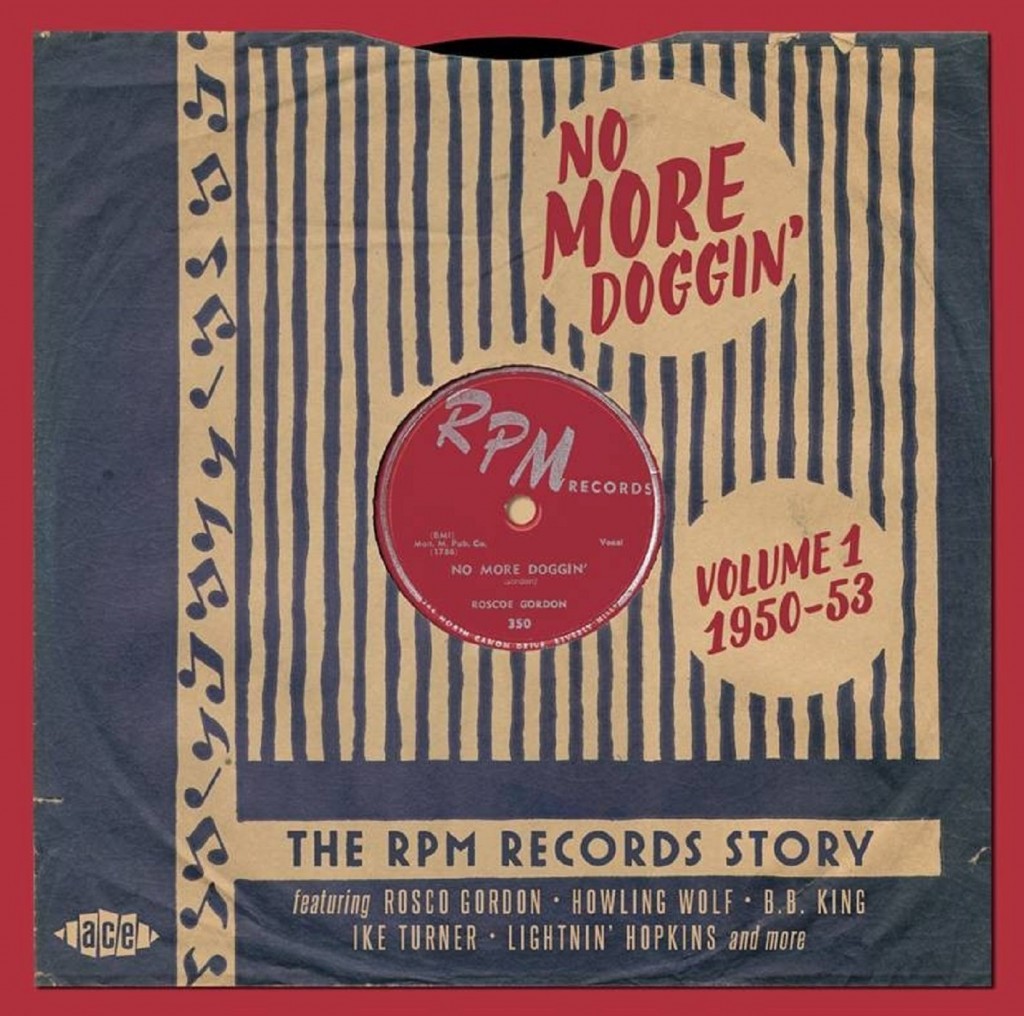 Full of Jump Blues, early R&B, and down-home Country Blues, the double-disc collection No More Doggin’ The RPM Records Story Vol. 1 might be one of the best introductions to early 50’s blues ever. Compiled by the good folks at ACE Records, this collection covers the early years of RPM Records and features well know artists like B.B. King, Howlin’ Wolf, and Lightnin’ Hopkins.
Full of Jump Blues, early R&B, and down-home Country Blues, the double-disc collection No More Doggin’ The RPM Records Story Vol. 1 might be one of the best introductions to early 50’s blues ever. Compiled by the good folks at ACE Records, this collection covers the early years of RPM Records and features well know artists like B.B. King, Howlin’ Wolf, and Lightnin’ Hopkins.
Started in 1950 by the Bihari Brothers, RPM was meant to be a subsidiary of the Bihari’s very popular label Modern Records. After initially having lots of success with Modern, the Bihari’s began having trouble getting their records played on the radio due to stations not wanting to play too many sides from any one label. So in order to get their product on the airwaves the Bihari’s started a number of subsidiary labels. Probably the most popular of Modern’s subsidiary labels, RPM introduced the world to a Memphis radio DJ by the name of Riley B. King. Eventually known as “B.B. King”, Riley came to the attention of the Bihari Brothers thanks to their working relationship with Memphis talent scout/producer Sam Phillips. Phillips at the time was recording local artists with his Memphis Recording Service then sending the masters to labels like Modern and Chess. Trough their relationship with Phillips, the Bihari’s got hooked up with some of the best talent in Memphis. Unfortunately their relationship ended when Phillips and the Bihari’s had a disagreement over a B.B. King session and went their separate ways. Fed up with feeding product he recorded to other labels, Phillips then decided to start his own label, Sun Records. As for Modern/RPM, even without the help of Phillips the label still went on to produce many more hits, including B.B. King’s breakthrough hit record Three O’Clock Blues.
No More Doggin’ The RPM Records Story Vol. 1 starts off with the Dixieland-style track “Alabama Bound”. Sung by Adele Francis, this tune was RPM’s first release in 1950. Other stand out tracks are Sonny Blair’s down-and-out blues ballad “Glad To Be Back Home”, B.B. King’s “Other Night Blues, and Howlin’ Wolf’s “Riding In The Moonlight”. My personal favorite recordings on this collection are the Lightnin’ Hopkins tracks. Excellent versions of “Bad Luck and Trouble” and “Another Fool In Town” showcase Hopkins at his bluesy best, while “Jake Head Boogie” shows that he also could ROCK when he wanted to. Another nice surprise on this collection is the tune “It’s Time For Lovin’ To Be Done”. Performed by Detroit Bluesman Little Eddie Kirkland, the song features uncredited backing vocals by the great John Lee Hooker!
As usual the folks at ACE left no stone unturned when putting this collection together. Included in this collection is a nice history of RMP records as well as a few words on all the performers. All of the albums 52 tracks sound crisp and clear thanks to the extra care shown by the folks who did the remastering. If you want to hear where Rock N’ Roll really began this collection is for you.
LEO “BUD” WELCH: Sabougla Voices
Leo “Bud” Welch: SABOUGLA VOICE Big Legal Mess/Fat Possum
For Fans of: Junior Kimbrough, R.L. Burnside, The White Stripes, Rev Louis Overstreet
Guitarist Leo “Bud” Welch was born in Sabougla, Mississippi in 1932. A natural musician, Leo taught himself to play the guitar by learning songs off the radio. As soon as he built up a small repertoire he began performing at parties and local juke-joints. Unfortunately work as a musician was inconsistent and even though he was incredibility talented he was unable to make a living playing music. In order to make ends-meet Leo ended up taking a job as a logger and had to resort to playing music only when he had free time. Then in 1975 Leo switched from playing Blues to playing Gospel. He started performing in churches all over Mississippi and even began hosting a local Gospel Television show. Even though he now considered himself a Gospel musician he still kept in touch with the local Blues scene. As time went on he heard that Blues musicians like Junior Kimbrough were having late-in-life success working with Fat Possum Records. Inspired by this he called up the label and requested an audition. Label owner Bruce Watson agreed to hear Leo play and ended up signing him on the spot. Now thanks to the good people at Fat Possum and Big Legal Mess Records the world finally gets to hear one of the treasures of Mississippi, guitarist Leo Welch.
The album is called Sabougla Voices and the music on it is honest no-frills Mississippi Gospel. Throughout the albums ten tracks Leo’s plays the guitar with the energy of someone half his age. Songs like “Praise His Name” and “You Can’t Hurry God” are upbeat and show us the lines between Blues and Gospel are blurry at best. In fact, if you were to change a few lyrics, these songs could easily be for Saturday night instead of Sunday morning. Another standout track on the record is the acoustic “Me and My Lord”. Sounding a little like Pops Staples, Leo does call and response with his backup singers while playing acoustic guitar. This song is given an extra push by Leo’s backing band which shows it’s professionalism by settling into a nice groove and not over playing.
Even though all of the music on Sabougla Voices is solid, the album’s strongest track is easily the slow and eerie blues tune “A Long Journey”. Beautifully recorded, this song is about accepting the fact that death is part of life. That being said, hopefully Leo will be still be around for a long time as he deserves to enjoy every minute of his new found success! He’s got gigs booked across the U.S. this summer and is even scheduled to perform in Europe! Not bad for someone that at one point had to turn down an audition with B.B. King because he couldn’t afford to travel to Memphis. This album is excellent and belongs in your collection.
BUDDY GUY “WHEN I LEFT HOME”
Â
A few years ago while I was doing a blues gig in San Francisco and I got into a conversation with another musician about great Blues guitar players.  “It’s a shame there aren’t any great blues players left” he said.  “That’s not true” I replied, “B.B. is still around and of course you have Buddy Guy”.  The musician gave me a strange look and said “What?! Why do you like Buddy Guy?  I saw him once and he just played a bunch of Hendrix riffs”.  All I could do at that point was chuckle and reply, “Yeah, well where do you think Hendrix, got some of those ideas from?  Jimi was a student of the Blues and listened to all the blues records he could get his hands on. The guitar player on many of these records was Buddy Guy. ”
Buddy Guy’s guitar playing has inspired guitar players in every genre of music for over fifty years. Always an exciting live act, Buddy has taken his exciting brand of electric blues all all over the world. He’s shared the stage with blues legends like Muddy Waters and rockers like The Rolling Stones. He’s headlined countless festivals, performed on television and even performed for Presidents and royalty. That being said his impressive career isn’t limited just to the stage. During the 1960’s Buddy was an in-demand studio musician for Chess records and played lead guitar on many hits by the likes of Muddy Waters, Howlin’ Wolf, and Koko Taylor. In short, Buddy Guy has lived enough in his 76 years of life to count for three lifetimes.
In “When I Left Home” Buddy (with help from David Ritz) takes us from the farm he grew up on in Louisiana to the streets of Chicago.  A master storyteller, Buddy doesn’t hold back when talking about the ups and downs of life as a blues man. With a mother in need of extra medical attention after suffering a stroke, he left Louisiana for Chicago in search work that would able him to not only support himself but also send money back home to Louisiana. Already proficient on guitar from playing around clubs in Louisiana, Buddy worked himself into the Chicago scene with the help of some local blues fans and eventually with help from the great Muddy Waters. One would think that this would be the ending of our story, but this is only the beginning. Over the next several years Buddy works hard to establish himself as one of the premier Blues guitar players on the Chicago scene. Working as a tow-truck driver in the day, playing clubs and doing recording sessions at night he found himself working night and day to make his dream happen and take care of his family. “When I Left Home” is the no-nonsense story of George “Buddy” Guy, and like it’s author, this story is THE REAL DEAL.
Not familiar with the music of Buddy Guy? Here are some albums I think you might enjoy. There are also many single recordings featuring Buddy, more information on these recordings and the albums listed below can be found in the back of the book “When I Left Home”.
Artist/Album
BUDDY GUY ALBUMS
“Buddy’s Blues” (Best of his Chess recordings)
“A Man and The Blues”
“Buddy and The Junior’s” (Buddy Guy with Junior Wells and Junior Mance)
“Damn Right I Got The Blues”
“Sweet Tea”
“Blues Singer”
“Can’t Quit The Blues” (Box Set)
RECORDS FEATURING BUDDY GUY
JUNIOR WELLS “Hoodoo Man Blues”
MUDDY WATERS “Folk Singer”
Essential Reading: “Delta Blues” By Ted Gioia
“Delta Blues” by Ted Gioia is by far the most comprehensive book available on the subject of the delta blues. The book starts “where the southern crosses the dog” and follows the blues all the way to Chicago and then back home to the hills of Mississippi. Â This is essential reading for blues lovers or anyone who wants to hear one of the most amazing stories in American history.

